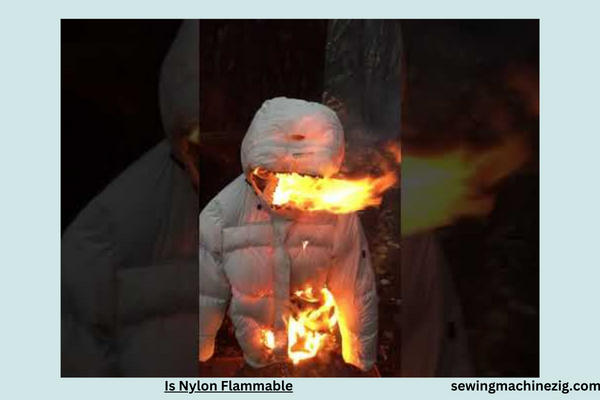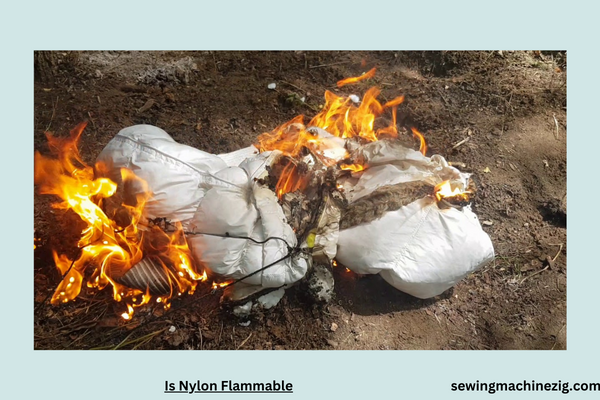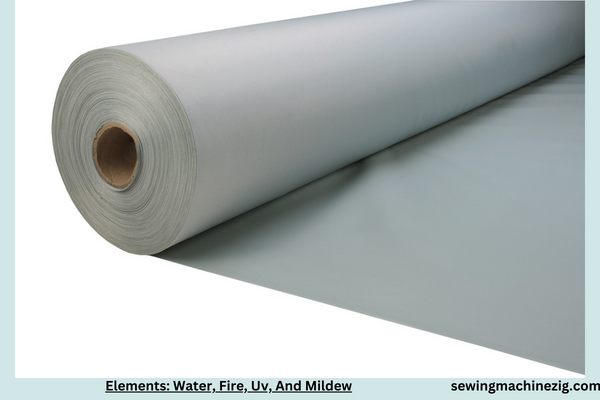
Inquisitive minds often wonder, is nylon flammable? This question delves into the safety aspects of this widely used synthetic material. Understanding the flammability of nylon is crucial, considering its prevalence in various everyday items. As a fabric prized for its durability and versatility, discerning whether it poses a fire risk becomes essential.
Thank you for reading this post, don't forget to subscribe!Let’s explore the nature of nylon in relation to its flammability, unveiling insights that empower individuals to make informed choices about the materials in their surroundings and ensuring safety remains a top priority.
Is Nylon Flammable Detailed Answer

Nylon Resistance To Different
In the vast world of materials, each substance possesses distinct properties that shape its applications and use cases. Nylon, a versatile synthetic polymer, is renowned for its strength, flexibility, and various applications. One significant consideration when working with any material is its flammability. This article aims to delve into the question:
is nylon flammable? To explore this, we will first understand the composition of Nylon, examine its flammability characteristics, and discuss safety measures.
Understanding Nylon:
Nylon, a polymer composed of long chains of repeating molecular units, belongs to the family of synthetic polymers known as polyamides. Developed in the 1930s, Nylon exhibits remarkable properties such as high tensile strength, resilience, and resistance to abrasion. These qualities have rendered Nylon invaluable in the production of textiles, plastics, and various industrial applications.
Flammability of Nylon:
Nylon’s flammability is a critical aspect to consider, especially when used in contexts where exposure to heat or flames is possible. While Nylon itself is not highly flammable, it does have certain characteristics that make it susceptible to burning. The material can melt and ignite at elevated temperatures, posing potential hazards.
Factors Influencing Flammability:
Several factors influence the flammability of Nylon, and understanding these elements is crucial for responsible use. One primary factor is the thickness of the Nylon material. Thicker Nylon tends to be more resistant to ignition compared to thinner variations. Additionally, the presence of additives or coatings can either enhance or reduce flammability.
Testing and Standards:
To assess the flammability of materials like Nylon, standardized tests are employed. The most common test is the flammability test specified in standards such as ASTM D568 and ISO 3795. These tests involve subjecting the material to controlled conditions to measure its ignition and burning characteristics.
Safety Measures:
While Nylon may have inherent flammability risks, adopting safety measures can mitigate potential hazards. In industrial settings or environments where flammable materials are present, fire-resistant coatings or treatments can be applied to Nylon products. Furthermore, educating individuals about proper usage, storage, and handling of Nylon items contributes to overall safety.
Applications and Considerations:
Nylon’s versatility makes it a preferred choice in various industries, including fashion, automotive, and manufacturing. Understanding its flammability is crucial in selecting the right type of Nylon for specific applications. For instance, flame-retardant Nylon is engineered to meet stricter safety requirements, making it suitable for applications where fire resistance is paramount.
Unique Summary:
In the intricate tapestry of materials, Nylon stands out as a resilient and adaptable polymer. Exploring its flammability reveals a nuanced landscape where factors like thickness and additives play pivotal roles.
As we navigate the realms of safety measures and testing standards, the question “Is Nylon flammable?” transforms into an insightful exploration of responsible usage. Thus, understanding Nylon’s characteristics empowers us to leverage its versatility while prioritizing safety in diverse applications.
Elements: Water, Fire, Uv, And Mildew

Introduction: Nylon, a synthetic polymer celebrated for its versatility, finds itself in various applications across industries. One of the key factors contributing to its popularity is its exceptional resistance to different elements, making it a reliable choice in diverse environments.
In this exploration, we delve into the fascinating world of Nylon and its resistance to water, fire, UV (ultraviolet) rays, and mildew. Understanding how Nylon weathers these elements is crucial for appreciating its durability and wide-ranging utility.
1. Water Resistance:
One of Nylon’s standout features is its impressive resistance to water. Unlike natural fibers, Nylon does not absorb water readily. This property makes it ideal for applications where exposure to moisture is common. Whether in the form of Nylon fabrics used in outdoor gear or as a component in industrial materials, Nylon’s ability to resist water absorption helps maintain its structural integrity even in damp conditions.
The hydrophobic nature of Nylon is owed to its molecular structure, which does not readily allow water molecules to penetrate and disrupt the material. This makes Nylon an excellent choice for items like rain jackets, backpacks, and tents, where staying dry is of utmost importance.
2. Fire Resistance:
While Nylon is not inherently flame-resistant, it exhibits certain properties that make it resistant to catching fire easily. When exposed to flames, Nylon tends to melt rather than ignite, and its combustion is relatively slow. This is due to the fact that Nylon is a thermoplastic, meaning it softens when exposed to heat and returns to a solid state upon cooling.
However, it’s essential to note that Nylon can burn, and the rate of combustion can vary depending on the specific type of Nylon and its thickness. Flame-retardant versions of Nylon have been developed to enhance fire resistance, making them suitable for applications where minimizing the risk of fire is critical.
3. UV Resistance:
Nylon’s resistance to UV radiation is a key factor in its longevity, especially in outdoor applications. Exposure to sunlight and UV rays can lead to the degradation of many materials, causing fading, brittleness, and a reduction in overall durability. Nylon, on the other hand, has a natural resistance to UV radiation.
This resistance is attributed to the molecular structure of Nylon, which can withstand the impact of UV rays without undergoing significant degradation. This quality makes Nylon an excellent choice for outdoor fabrics, ropes, and other items that are exposed to sunlight regularly. However, it’s important to note that prolonged exposure to intense UV radiation can still have some impact on Nylon over an extended period.
4. Mildew Resistance:
Mildew, a type of mold that thrives in damp and humid conditions, can wreak havoc on various materials. Nylon, with its inherent resistance to moisture absorption, also exhibits resistance to mildew. The hydrophobic nature of Nylon inhibits the growth of mold and mildew, making it a preferred choice for products that may be exposed to damp environments.
This resistance to mildew is particularly valuable in applications such as outdoor furniture, camping gear, and marine equipment, where exposure to moisture and humidity is common. Nylon’s ability to resist mildew ensures that the material remains durable and free from the unsightly and potentially damaging effects of mold growth.
Unique Summary:
In the journey through Nylon’s resistance to water, fire, UV rays, and mildew, a captivating narrative unfolds. From its hydrophobic embrace that repels water to its graceful dance with flames, Nylon emerges as a versatile contender in the realm of materials. Its resistance to UV rays, a shield against the sun’s relentless gaze, and its defiance against the encroachment of mildew paint a portrait of durability.
In this exploration, Nylon stands as a testament to the marvels of synthetic polymers, adapting to various environments with resilience. It’s a tale of practicality and reliability, where Nylon’s molecular dance with elements ensures its enduring presence in our lives. As we navigate the realms of water, fire, UV, and mildew, Nylon stands tall, a robust ally in the face of diverse challenges.
Conclusion
In conclusion, awareness of nylon’s flammability is crucial for safety precautions. Nylon is inherently flammable, and while flame-resistant treatments exist, it’s essential to exercise caution around open flames. Understanding the material’s properties empowers individuals to make informed decisions about its use, especially in contexts where fire risk is present.
Whether considering clothing, furnishings, or other applications, incorporating fire safety measures ensures a secure environment. Prioritizing knowledge about nylon’s flammability enhances overall safety practices in various settings.
FAQS
Q1: Is nylon flammable?
A1: Yes, nylon is flammable. It is important to be cautious as it readily ignites and can melt when exposed to flames or high temperatures.
Q2: Can nylon be made flame-resistant?
A2: While nylon is naturally flammable, flame-resistant treatments are available. These treatments can reduce flammability and slow down the spread of flames. “is nylon flammable“
Q3: What safety precautions should be taken with flammable nylon items?
A3: Keep nylon items away from open flames, heaters, and other sources of heat. Additionally, avoid exposing nylon to direct contact with sparks or hot surfaces to minimize the risk of ignition. “is nylon flammable“
Q4: Are all nylon products equally flammable?
A4: The flammability of nylon products can vary. Some items may undergo flame-resistant treatments during manufacturing, while others retain their natural flammability. Check product labels for information on flame resistance. “is nylon flammable“
Q5: Can nylon be safely used in clothing and home furnishings?
A5: Yes, nylon can be used in clothing and home furnishings, but caution is advised. Ensure that items are treated for flame resistance when applicable and follow safety guidelines to minimize the risk of fire hazards. “is nylon flammable“



